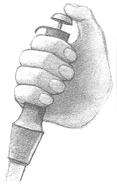 The pipette is a reliable precision instrument that has been used and trusted for many years. However, as with many forms of instrumentation, a pipette performs only as well as the operator’s technique allows. Differences in technique—some more than others—can alter delivery volumes and affect data integrity. As your laboratory’s demand for accuracy and precision increases, so too does the importance of understanding and developing optimal pipetting technique.
The pipette is a reliable precision instrument that has been used and trusted for many years. However, as with many forms of instrumentation, a pipette performs only as well as the operator’s technique allows. Differences in technique—some more than others—can alter delivery volumes and affect data integrity. As your laboratory’s demand for accuracy and precision increases, so too does the importance of understanding and developing optimal pipetting technique.
The following tips will help you produce accurate and precise laboratory results through a proper pipetting technique:
1. Prewet the pipette tip
Aspirate and expel sample liquid at least three times before aspirating a sample for delivery. Evaporation within the tip can cause a significant loss of sample before delivery. Prewetting increases the humidity within the tip, thus reducing variation in sample evaporation. Using the same tip (without prewetting) to deliver multiple samples results in lower volu
me for the first few samples. The need to prewet increases when working with volatile samples such as organic solvents.
…
Add new comment